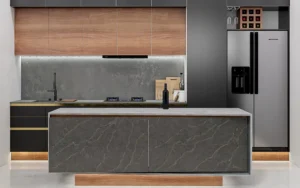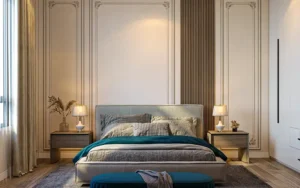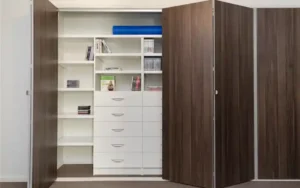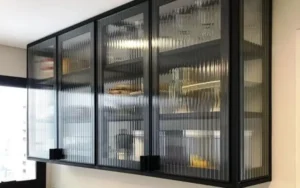Particleboard: The Budget-Friendly Engineered Wood Solution for Modern Interiors
In This Post. All about Particleboard.
- Particleboard?
- Common Names.
- Manufacturing Process.
- Primary Applications.
- Advantages.
- Limitations.
- Recommendations
Particleboard
This engineered wood product, born from the innovative use of wood waste materials, represents a perfect example of how modern manufacturing techniques can transform humble raw materials into versatile building components.
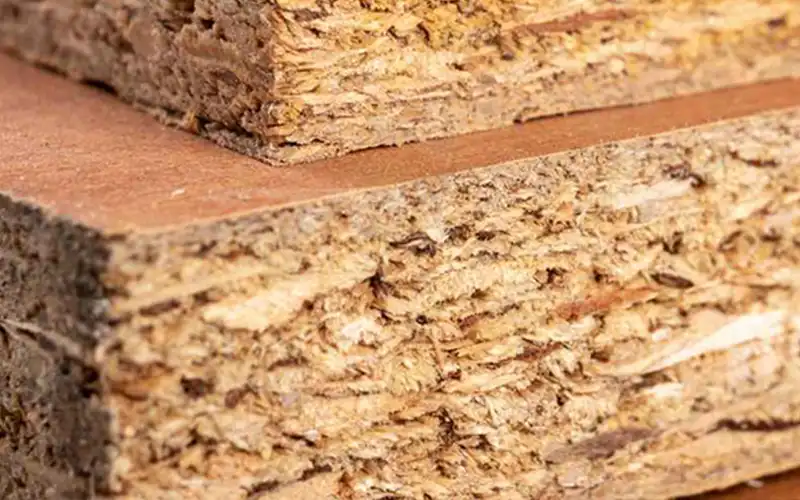
Created through the ingenious combination of wood particles and synthetic resins, particleboard has established itself as a practical solution in various applications, from furniture manufacturing to structural underlayment.
Blockboard Common Trade Names and Grades
Particleboard is known by various names across different regions and industries, each reflecting aspects of its composition or manufacturing process:
- Particleboard – The most commonly used term internationally
- Chipboard – Predominantly used in European markets
- Flakeboard – Referring to the flaked wood particles used in its construction
- Waferboard – When larger wood particles or wafers are used
- Low-Density Fiberboard (LDF) – Describing its lighter variant
- Composite Board – A general term sometimes used in construction
- Furniture Board – Common in retail and furniture manufacturing
- P1, P2, P3 Boards – Technical classifications based on application and properties
Particleboard Manufacturing Excellence
The production of particleboard represents a sophisticated fusion of wood processing technology and chemical engineering. The journey begins in lumber mills and wood processing facilities, where what was once considered waste material becomes the foundation for this versatile product.
The manufacturing process involves multiple stages, each crucial to the final product’s quality and performance.
Initially, raw materials undergo careful selection and preparation. Wood particles are meticulously sorted by size, with larger chips designated for the core layer and finer particles reserved for surface layers. This gradient structure is fundamental to particleboard’s characteristics, providing a smooth surface while maintaining internal strength. The moisture content of these particles is precisely controlled through industrial drying processes, typically targeting 2-8% moisture content for optimal resin bonding.
The blending stage introduces sophisticated resin systems, primarily urea-formaldehyde or melamine-urea-formaldehyde. These resins are carefully formulated with catalysts and wax emulsions to achieve specific performance characteristics.
The mat formation process utilizes advanced spreading technology to create distinct layers, with finer particles on the surface and coarser material in the core. This layering technique is crucial for achieving the desired balance between surface smoothness and internal strength.
The pressing process employs massive hydraulic presses operating at temperatures between 140-220°C (284-428°F) and pressures up to 2-3 MPa. This combination of heat and pressure activates the resin cure while compressing the mat to its final density. Modern pressing systems incorporate sophisticated control systems to optimize the density profile through the board thickness, crucial for achieving the desired balance of properties.
Greenply Industries, Century Plyboards, Kitply Industries and Sarda Plywood Industries are the major Particleboard manufactures in india
Particleboard key Applications
In the realm of furniture manufacturing, it serves as the primary substrate for many mass-produced pieces, offering a stable platform for various finishes and laminates. Its uniform structure and consistent thickness make it particularly suitable for contemporary furniture designs that emphasize clean lines and minimal aesthetics.
In commercial interiors, particleboard finds extensive use in office furniture, retail fixtures, and display units. Its cost-effectiveness and ease of fabrication make it particularly attractive for large-scale commercial projects where budget considerations are paramount.
The material’s ability to accept a wide range of finishes allows designers to achieve high-end looks while maintaining project economics.
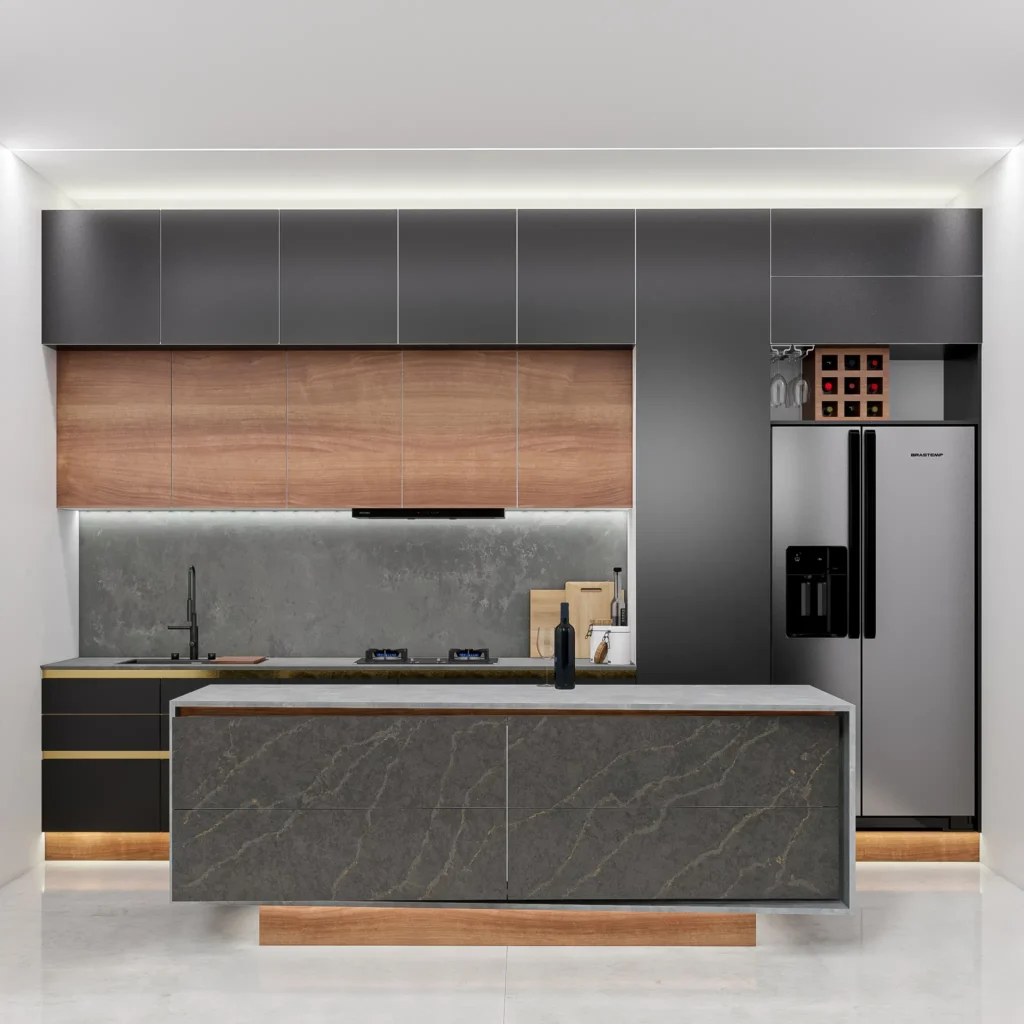
Design Your Dream Interior: Explore Our Modular Interior Design Services
Launch Your Modular Interior Journey with Align Designs: Find the Best Plywood and Hardware Fittings in Our Curated List.
✔️Free 3D Designs
✔️Color selection
✔️45 Days Deliver
✔️15 years Guarantee
Particleboard Advantages
Particleboard’s advantages extend beyond its obvious cost benefits. The material’s uniform density and consistent composition provide several performance benefits that make it particularly suitable for certain applications.
The material’s smooth surface characteristics, particularly in fine-particle surface layers, provide an excellent substrate for veneers, laminates, and other decorative finishes. This quality is particularly valuable in furniture manufacturing, where surface appearance is crucial. The uniform core structure also allows for consistent machining and joinery, facilitating efficient manufacturing processes.
Understanding Limitations of Particleboard
While particleboard offers numerous advantages, understanding its limitations is crucial for appropriate application. The material’s relationship with moisture represents its primary challenge.
When exposed to water or high humidity, particleboard can experience significant dimensional changes and strength reduction. This characteristic necessitates careful consideration in applications where moisture exposure is possible.
The material’s mechanical properties also present certain limitations. While adequate for many applications, its screw-holding capacity and overall strength are generally lower than those of plywood or MDF. This can affect joint design and hardware selection, particularly in applications involving frequent assembly and disassembly.
Home Interior Recommendations
For optimal utilization of particleboard in home interiors, consider these application-specific recommendations:
Furniture Applications
- Perfect for bedroom furniture and entertainment units
- Excellent for built-in shelving and display cases
- Suitable for office furniture and workstations
Wall Treatments
- Effective as a substrate for wallcoverings
- Useful for decorative panel installations
- Good for creating accent walls with laminate finishes
Professional Recommendations
Proper material selection is crucial – choosing the right grade and density for specific applications can significantly impact project success. For example, higher-density boards are recommended for horizontal surfaces that will bear weight, while standard grades may suffice for vertical applications.
Installation practices significantly influence performance. Adequate support spacing, proper fastener selection, and appropriate edge treatment are essential considerations. In moisture-prone areas, edge sealing and proper surface protection are crucial for longevity. Using quality hardware and appropriate assembly techniques ensures optimal performance and durability.
Finishing techniques deserve particular attention. While particleboard accepts most finishes well, proper surface preparation and sealing are essential. For painted applications, using appropriate primers and sealers helps achieve professional results. When applying laminates or veneers, ensuring proper adhesive coverage and pressure during application is crucial for long-term durability.
In conclusion, particleboard remains a valuable material in modern interior design, offering a cost-effective solution for many applications. While it has limitations, proper understanding of its characteristics and appropriate application techniques can ensure successful outcomes.

